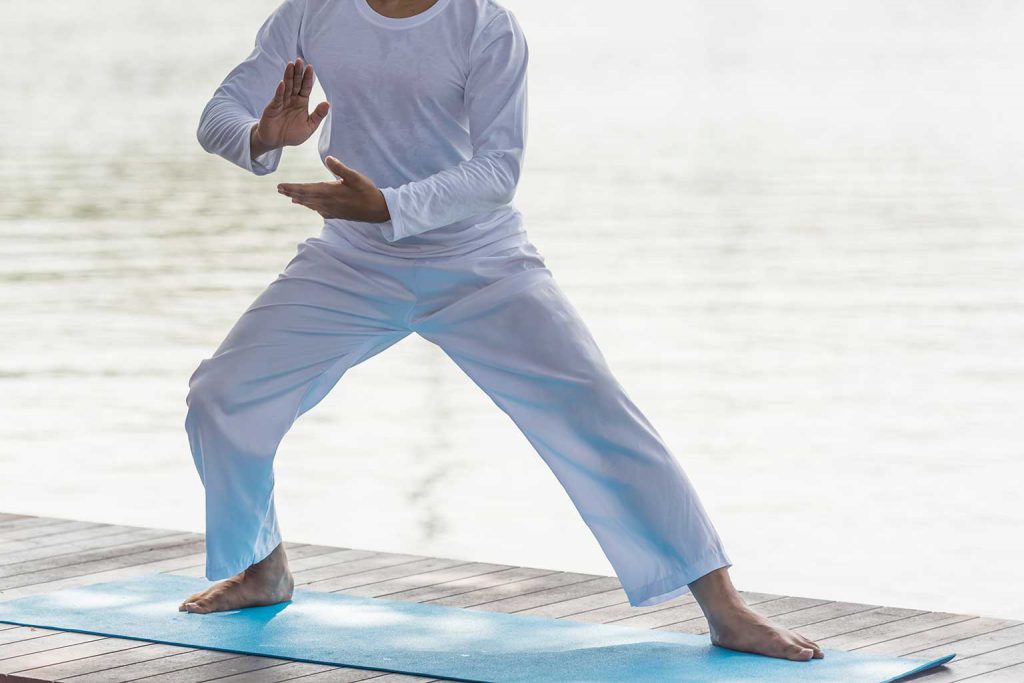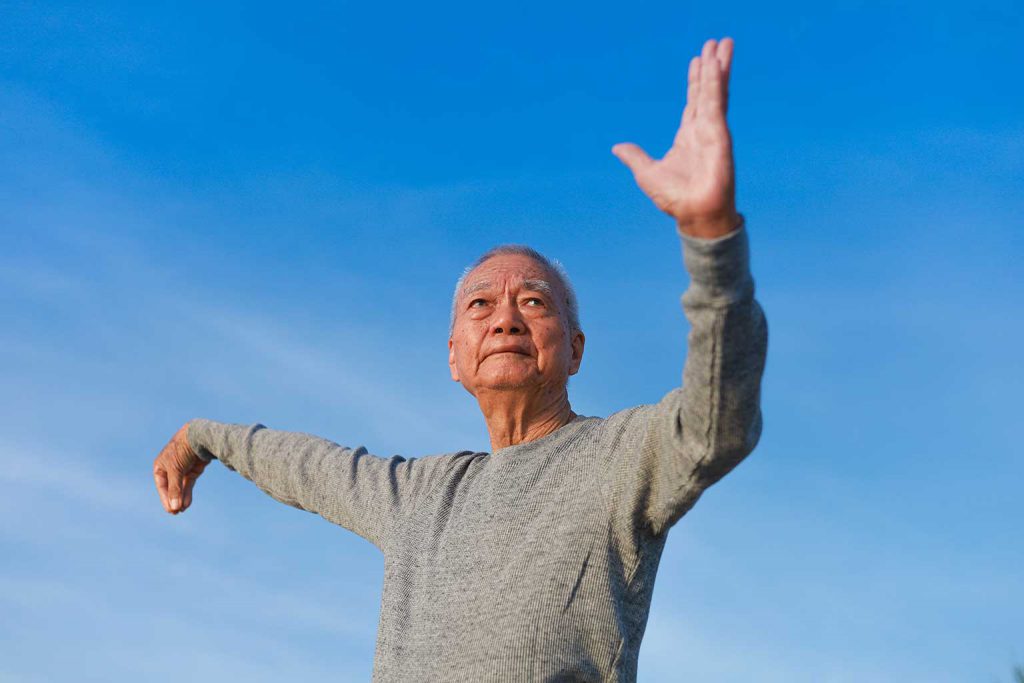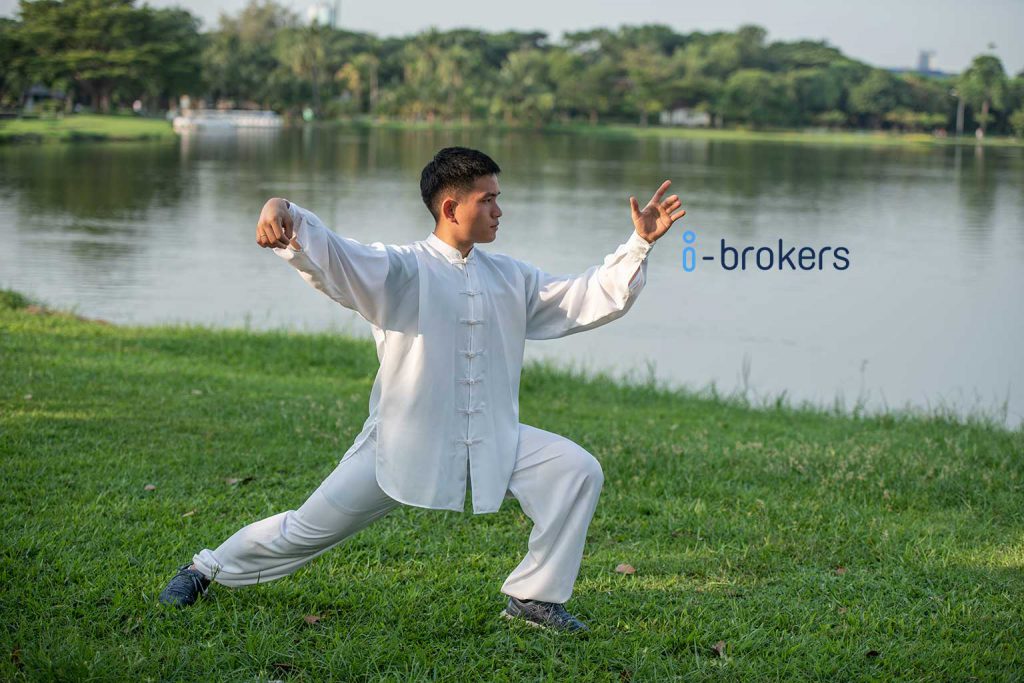Tai chi is a form of exercise that began as a Chinese tradition. It’s based in martial arts, and involves slow movements and deep breaths. Tai chi has many physical and emotional benefits. Some of the benefits of tai chi include decreased anxiety and depression and improvements in cognition. It may also help you manage symptoms of some chronic diseases, such as fibromyalgia or chronic obstructive pulmonary disease (COPD).
In this blog post, we are going to share with you the benefits and risks of tai chi, and how you can start practicing this exercise.
Table of contents
- 1. Enhances sleep
- 2. Enhances balance and strength in people with Parkinson’s
- 3. Enhances cognition in older adults
- 4. Enhances COPD symptoms
- 5. Enhances fibromyalgia symptoms
- 6. Minimizes pain from arthritis
- 7. Minimizes stress
- Risks of Tai Chi
- How to start tai chi
- Choosing a tai chi style
- How does tai chi differ from yoga?
- Takeaway

1. Enhances sleep
Regularly practicing tai chi may help you to have more restful sleep.
One study followed young adults with anxiety after they were prescribed two tai chi classes each week, for 10 weeks. Based on participant reporting, the individuals who practiced tai chi experienced significant improvements in their quality of sleep compared to those in the control group. This same group also experienced a decrease in their anxiety symptoms.
Tai chi can improve sleep for older adults, too. In a study published in 2016, researchers found that two months of twice-weekly tai chi classes was associated with better sleep in older adults with cognitive impairment.
2. Enhances balance and strength in people with Parkinson’s
In a randomized, controlled trial of 195 participants, regular practice of tai chi was found to decrease the number of falls in people with Parkinson’s disease. Tai chi can also help you to increase leg strength and overall balance.
3. Enhances cognition in older adults
Tai chi may improve cognition in older adults with cognitive impairment. More specifically, tai chi may help improve memory and executive functioning skills like paying attention and carrying out complex tasks.
4. Enhances COPD symptoms
Tai chi may improve some of the symptoms of chronic obstructive pulmonary disease (COPD). In one study, people with COPD practiced tai chi for 12 weeks. At the end of the study, they have improvements in their ability to exercise and reported an overall improvement in their quality of life.
5. Enhances fibromyalgia symptoms
Tai chi may compliment traditional methods for management of certain chronic diseases.
Results from a 2018 study showed that a consistent tai chi practice can decrease the symptoms of fibromyalgia in some people. Participants in the study who practiced tai chi for 52 weeks exhibited greater improvements in their fibromyalgia-related symptoms when compared to participants practicing aerobics.
6. Minimizes pain from arthritis
In a small-scale 2010 study, 15 participants with rheumatoid arthritis (RA) practiced tai chi for 12 weeks. At the end of the study, the participants reported less pain and improved mobility and balance.
A larger, earlier study found similar results in people with knee osteoarthritis (OA). In this study, 40 participants with knee OA practiced 60 minutes of tai chi, two times a week for 12 weeks. Following the study, participants reported a reduction in pain and an improvement in mobility and quality of life.
When compared to physical therapy, tai chi has also been found to be as effective in the treatment of knee OA.
Always talk to your doctor before starting tai chi if you have arthritis. You may need to do modified versions of some of the movements.
7. Minimizes stress
One of the main benefits of tai chi is its ability to reduce stress and anxiety, though most evidence is anecdotal.
In 2018, one study compared the effects of tai chi on stress-related anxiety to traditional exercise. The study included 50 participants. The researchers found that tai chi provided the same benefits for managing stress-related anxiety as exercise.
Because tai chi also includes meditation and focused breathing, the researchers noted that tai chi may be superior to other forms of exercise for reducing stress and anxiety. However, a larger-scale study is needed.
Tai chi is very accessible and lower impact than many other forms of exercise. The researchers found it to be safe and inexpensive, so it may be a good option if you are otherwise healthy and experiencing stress-related anxiety.

Risks of Tai Chi
Tai chi is generally considered to be a safe exercise with few side effects. You may experience some aches or pains after practicing tai chi if you’re a beginner. More rigorous forms of tai chi and improper practice of tai chi are associated with increased risk of injury to joints. Especially if you’re new to tai chi, consider attending a class or working with an instructor to reduce your risk of injury.
If you’re pregnant, talk to your healthcare provider before beginning a new exercise program.
How to start tai chi
Tai chi focuses on proper posture and exact movements, something that is difficult to learn on your own. If you’re new to tai chi, take a class or get an instructor.
Tai chi is taught in studios all over the United States and other countries. Larger gyms, like the YMCA, sometimes offer tai chi classes as well.
Choosing a tai chi style
There are five different styles of tai chi, and each style can be modified to suit your goals and personal fitness level. All styles of tai chi incorporate continuous movement from one pose to the next.
• Yang style tai chi focuses on slow, graceful movements and relaxation. Yang style is a good starting point for beginners.
• Wu style tai chi places an emphasis on micro-movements. This style of tai chi is practiced very slowly.
• Chen style tai chi uses both slow and fast movements. This style of tai chi might be difficult for you if you’re new to the practice.
• Sun style tai chi shares a lot of similarities with Chen style. Sun style involves less crouching, kicking, and punching, making it less physically demanding.
• Hao style tai chi is a lesser-known and rarely practiced style. This style of tai chi is defined by a focus on accurate position and internal strength.
How does tai chi differ from yoga?
Tai chi emphasizes fluid movement and has roots in Chinese culture. Yoga focuses on posing and originated in Northern India.
Both tai chi and yoga are forms of exercise that involve meditation and deep breathing, and they have similar benefits, such as:
• relieves stress
• improves mood
• Improves sleep
Takeaway
On the whole, tai chi is a low-impact, noncompetitive martial art that is known for its potential health benefits.
Researchers have conducted many studies on this martial art to understand its health benefits. Some studies show tai chi can improve brain function, lower stress and depression, and reduce chronic pain.
However, scientists must conduct further studies to confirm its benefits. People who wish to start practicing tai chi should consult their doctor first if possible.


